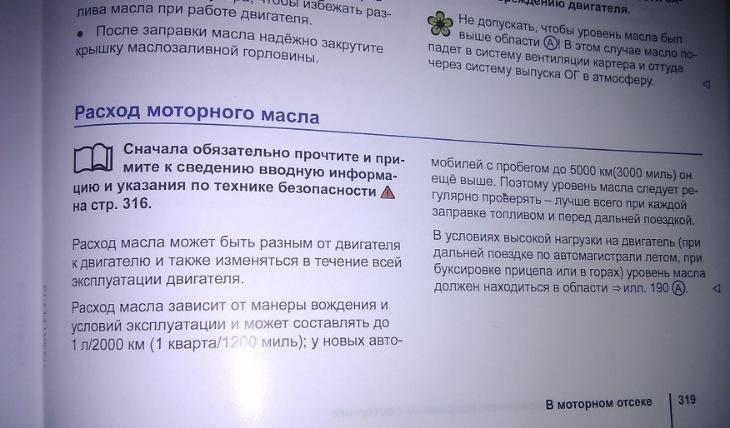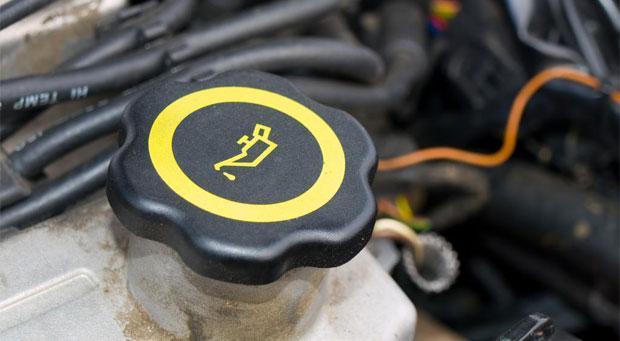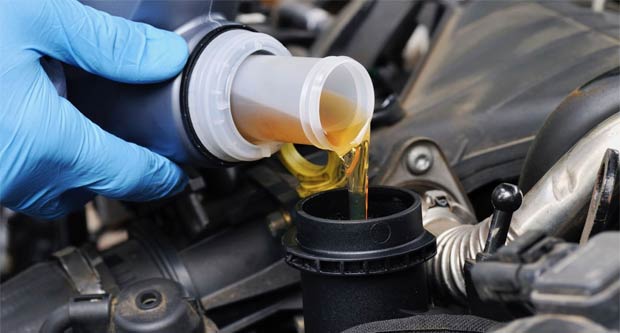
Oil consumption rate for waste
Why is oil consumed for waste?
Even in a fully serviceable engine, without external leaks, the oil level gradually drops. For new engines, the level drop is usually only a few millimeters (as measured by the dipstick) and is sometimes perceived as the complete absence of lubricant burnout in the engine. But today in nature there are no engines that would not consume oil for waste at all. And below we will tell you why.
Firstly, the very mechanism of oil operation in a ring-cylinder friction pair implies its partial combustion. On the walls of the cylinders of many cars, the so-called khon is applied - a microrelief designed to trap oil in the contact patch. And the oil scraper rings, of course, are not physically able to get this lubricant from the notches on the cylinder. Therefore, the lubricant remaining on the honed surface is partially burned out by the burning fuel during the operating cycle.
Secondly, even in motors where, according to technology, the cylinders are polished almost to a mirror state, the fact of the presence of a microrelief on the working surfaces is not canceled. In addition, even the most thoughtful and effective oil scraper rings are not able to completely remove the lubricant from the cylinder walls, and it burns out naturally.


The oil consumption rate for waste is determined by the automaker and is almost always indicated in the car's operating instructions. The figure that the manufacturer says usually indicates the maximum allowable oil consumption of the engine. After exceeding the threshold indicated by the automaker, the engine should at least be diagnosed, since with a high degree of probability the rings and valve stem seals have worn out and need to be replaced.
For some engines, the rate of oil consumption for waste, so to speak, is somewhat indecent. For example, on M54 engines of BMW cars, up to 700 ml per 1000 km is considered the norm. That is, with the maximum allowable consumption of lubricant, it will be necessary to add approximately the same amount of oil between replacements as is in the motor.


Oil consumption for diesel engine waste: calculation
Diesel engines, unlike gasoline engines, have been more voracious in terms of oil consumption in all periods of the automotive industry. The point is in the specifics of the work: the compression ratio and, in general, the voltage on the parts of the crankshaft for diesel engines are higher.
Often, motorists do not know how to independently calculate the oil consumption consumed by the engine for waste. To date, several methods are known.
The first and simplest is the method of topping up. Initially, at the next maintenance, you need to fill in the oil strictly according to the upper mark on the dipstick. After 1000 km, gradually add oil from a liter container until the same level is reached. From the remains in the canister, you can understand how much the car ate oil for waste. Control measurements should be made under the same conditions that were at the time of the maintenance. For example, if the oil level was checked on a hot engine, then after topping up this must be done under the same conditions. Otherwise, the result obtained may differ significantly from the actual consumption of engine oil.


The second method will give a more accurate result. Completely drain the oil from the crankcase during maintenance. Pour fresh to the top mark on the dipstick and check how much is left in the canister. For example, we pour the leftovers into a measuring container for a more accurate result, but you can also navigate by the measuring scale on the canister. We subtract the remnants from the nominal volume of the canister - we get the amount of oil poured into the engine. In the process of driving, over 15 thousand km (or other mileage regulated by the automaker), add oil to the mark and count it. It is most convenient to simply top up with liter cans. Usually the difference between the marks on the dipstick is about a liter. After the next maintenance, we drain the oil from the crankcase and measure its amount. We subtract the amount of drained mining from the initially filled volume of oil. To the resulting value we add the entire volume of lubricant that was filled in for 15 thousand kilometers. Divide the resulting value by 15. This will be the volume of oil that burns out per 1000 kilometers in your car. The advantage of this method is a large sample, which eliminates the operational errors that are typical for measurements at low mileage.
Then we simply compare the obtained value with the passport data. If the waste consumption is within the norm - we go further and do not worry. If it exceeds the passport values, it is advisable to carry out diagnostics and find out the causes of the increased “zhora” of oil.


Watch this video on YouTube